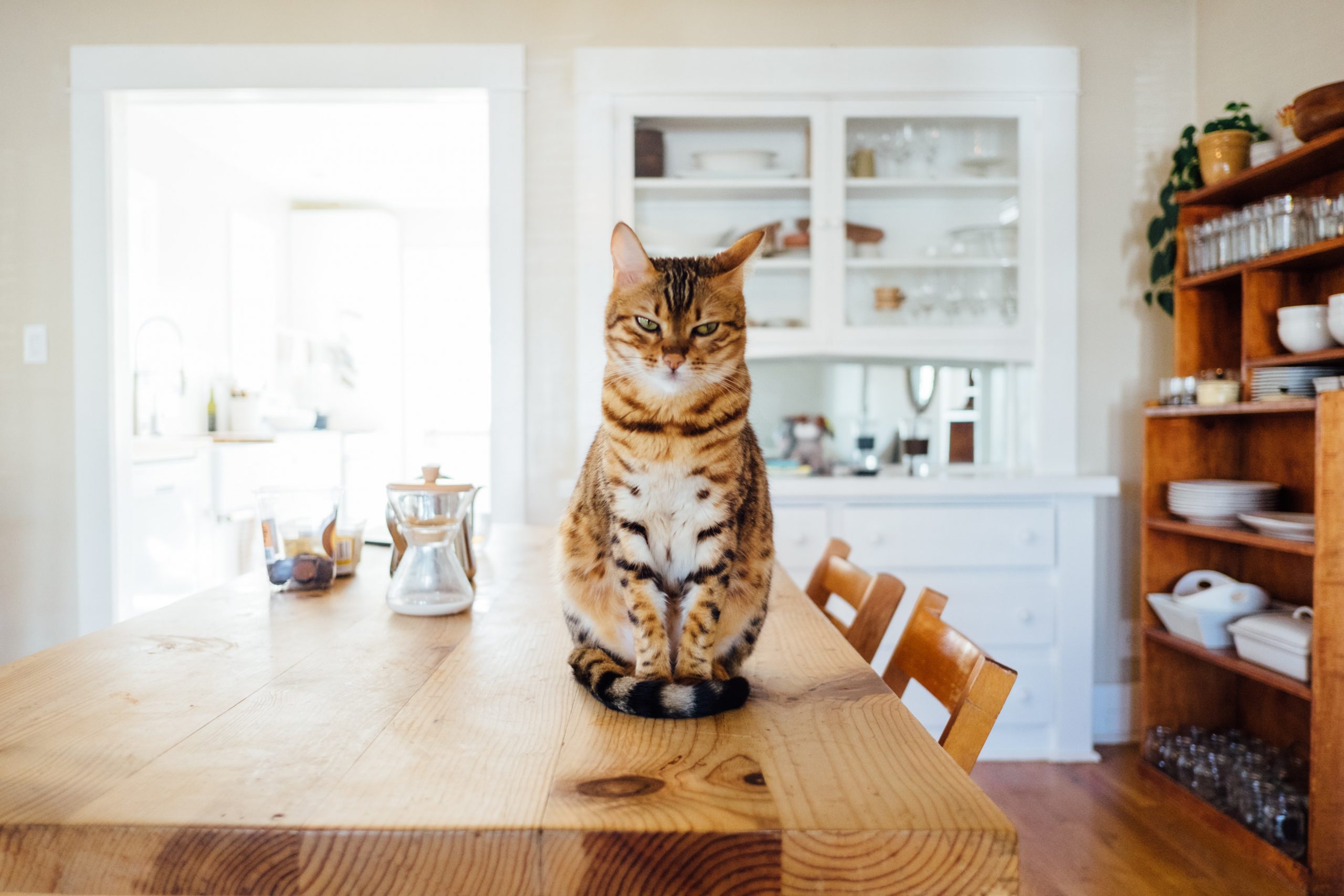Signs Your Cat May Have a Problem Beyond the Litter Box
- A pattern of urinating and/or defecating outside the litter box
- Urine spraying, including evidence of vertical urine marks around doorways, walls, windows, or objects in the house
- Spending too much time in the litter box
- Vocalizing while in the litter box
- Lethargy
- Increased water intake
- Poor appetite
- Weight loss
- Poor hair coat
- Visiting the litter box more often than usual
Potential Causes of Your Cat Missing the Litter Box
You might wonder why your cat is not using her litter box anymore, especially if the behavior has only recently become habitual. It’s possible that she is suffering from a health issue, such as feline lower urinary tract disease (FLUTD), bacterial cystitis, kidney failure, liver disease, or diabetes.
Household changes can also have an impact on your cat’s demeanor. She may experience stress from situations like moving, remodeling, new pets or family members, and the sudden presence of outdoor cats. Aging cats may soil your home due to a decline in mobility or cognition. Stress can also lead to more serious conditions, like feline idiopathic cystitis, which is a common type of FLUTD. Here are 10 tips to help your cat relieve stress.
It may be that your cat has a problem with her litter box. If it’s not clean enough, too small or too deep (cats prefer about 2 inches of litter), difficult to access, or has a liner that makes her uncomfortable, she may decide to pee outside of her litter box. She also may not have enough litter boxes around the house, or dislikes their locations. In some cases, she may associate her litter box with a painful or uncomfortable situation. She may also dislike her litter, especially if you’ve recently switched to a different type. Cats prefer unscented litters.
How to Help Your Cat Use the Litter Box Properly
Contrary to what you might think, your cat is not trying to spite you by soiling outside of her litter box. Punishing her for the act will only make her fearful and exacerbate the problem. You should instead identify the reason she’s doing it and address it.
First, make sure that you scoop and change her litter box every day. Rinse the box with baking soda or unscented soap once a week. Add litter boxes to different areas of the house, being sure to place them in a quiet but accessible location; they should not be placed in areas that are too remote or overly trafficked. Remove hoods and liners from the litter box. Keep food bowls and bedding away from her litter box. Close doors to certain parts of your house when your cat will be home alone. If she tends to favor a certain spot, try to make that spot less appealing to her by placing a litter box, food bowl, bed, or treats there.
Also, make sure to effectively clean areas of your house where your cat has urinated outside of the litter box. This is not only for your benefit of eliminating urination odors and preserving your carpet and furniture, but it also helps reduce confusion for your cat. If she continues to smell areas where she has eliminated outside of the litter box, she might not understand that this isn’t acceptable behavior. Read our article about cat spraying for more information about cleaning up cat urine.
Diagnosing Your Cat’s Litter Box Problems
If your cat continues to eliminate outside of her litter box, take her to the vet to identify the cause and how to manage the problem. Your vet should give your cat a complete physical examination, complete blood count, blood chemistry panel, and urinalysis. After she receives treatment for medical conditions, litter box training may be necessary to return her to normal patterns. Be sure to give her praise every time she uses her litter box properly.
The Right Nutrition
If you have questions about your cat’s urinary health, talk to your veterinarian. She can help you decide if a specific cat food formulated for urinary health is appropriate to put your cat on to help with any urinary issues. She can also help you better understand any other environmental factors that might be contributing to your cat’s urinary issues.

